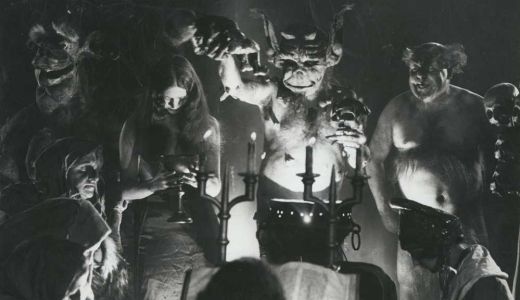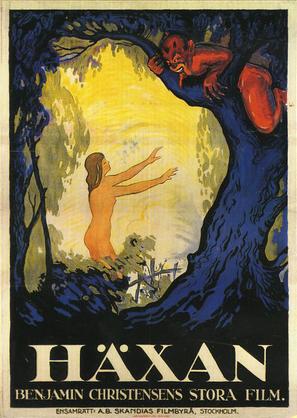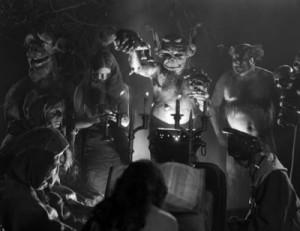One Christmas, I was given a copy of 1001 Movies You Must See Before You Die. I’ve never been able to resist The List, and after a quick count I was already up to about 300-and-something. Rather than being proud of having accomplished at least 600 hours plonked in front of a screen of one kind of another, this was a new challenge. In the years that have followed, I’ve managed to work my way up to 584 (for better or for worse, although by the time you read this I may well be into my 590s). So it was inevitable that I would eventually get around to watching the most “expensive Scandinavian silent film ever made, costing nearly two million Swedish krona” [1]. Doesn’t everybody?
Screening at Sydney’s Chauvel Cinema, as part of their ongoing Cinematheque program, Häxan was a surprising flick to turn up at a suburban arthouse cinema. Despite being 88 years old, this ‘documentary’ explores the history of diabolism through a silent series of artworks and ‘reproductions’ of medieval rituals, trials, torture and general satanic fun-filled weekends. It also compares historic treatment of witches to ‘hysterical’ women in the modern age, although it is never entirely clear whether the treatment of mentally ill women in 1920s as witches is being endorsed or decried by the film. Indeed, it is a difficult to stick Häxan in a category, so we’ll just call it horror-doco-surrealist-art-thingy for now. Still, the next time a kleptomaniac looks at you funny, be sure to check your back for ancient curses.
Director Benjamin Christensen was light-years ahead of the game, creating a horror piece that has genuinely got a few scares under its belt. The demon birth scene may be laughable, but the sabbath has all manner of creatures and animal-like beings dancing in the fire in a display that is both surreal and chilling. There are a few unintentional chuckles along the way though, showing our sensibilities have come a long way since 1922. The connections between ‘hysterical women’ and witchcraft (and let’s face it, the references to “hysterical” women) are certainly antiquated, but taking this as a piece of pure surrealist/art cinema, with a few dashes of horror for good measure, it’s definitely something you should see at least once for the rich tapestry of images woven throughout the loose narrative.
One of the quirky things about silent cinema is that many of the original scores have been lost, and this one is no exception. I’m not exactly sure where the score came from, but it was a little bit – how can I put this delicately? – modern for the film. Part industrial, part cats being used as fiddles and liberal doses of wailing women (Ridley Scott’s Gladiator may not be entirely to blame for that trend, then) it tends to jar with the images on screen, leaving me on the edge with a triangle of Toblerone lodged in my throat. Perhaps that was the point. The edge bit, and not the Toblerone. Although Toblerones have been around since 1908. Bet you didn’t think you’d be learning that today, did you?
Only 417 films to go now before I die, possible less by the time you get to read this. Given the theme of this week’s film, one can only assume that if one hits 666 films, they will die and go to hell. Helping me along at the moment is a little group I’ve joined called the 12StepFC. Coming out of the Sydney Film Festival, we are a group of people who met via Twitter. Rather than being lured into a dark alley and quietly murdering each other, we’ve chosen to check out all that cinema has to offer the world at any given opportunity. If cinema does kill me, at least I’m in good company.







No Responses